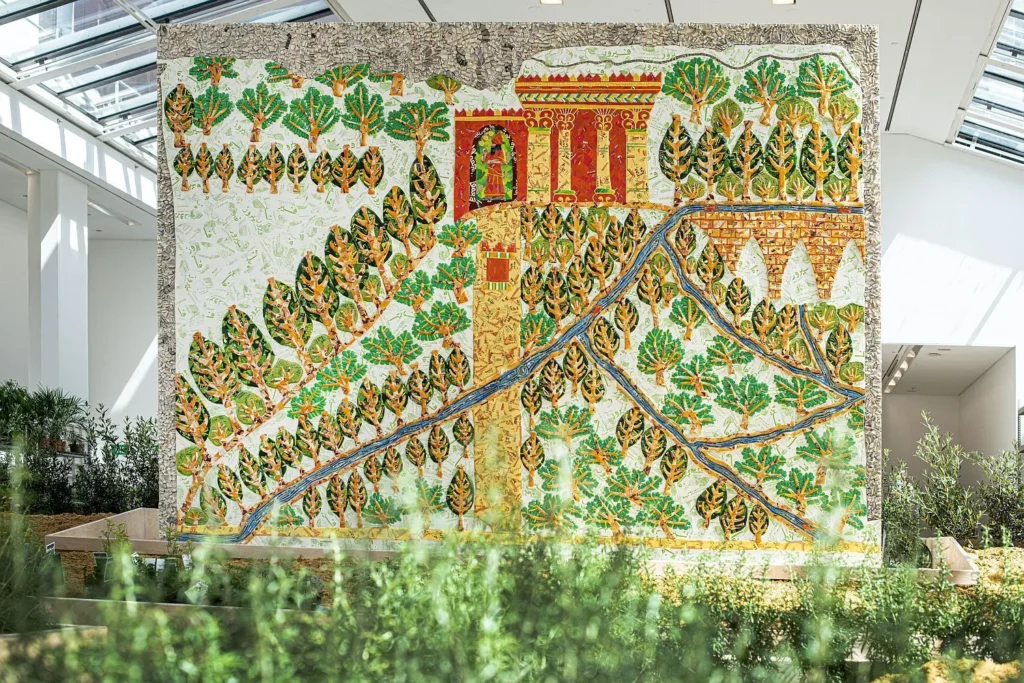
The Waiting Gardens of the North by renowned Iraqi-American artist Michael Rakowitz. Commissioned by Baltic in partnership with the IWM 14-18 NOW Legacy Fund, this major project responds to conflict by, figuratively and literally, nurturing a community and an evolving indoor garden landscape.
Rakowitz’s exhibition has been conceived as a garden that will continue to grow and develop during its run. Alongside newly created artworks, the installation will present a collection of plants at different stages of their growing process. Born out of collaboration with people living in Gateshead and Newcastle with experience of forced displacement, Rakowitz’s ruined garden acts as a metaphor for the overlapping histories of displacement, war, oppression, trauma and adaptation, that people, cultural objects and plants carry with them. Collaborating with the organisations The Comfrey Project, West End Refugee Service (WERS), Scotswood Garden, Dilston Physic Garden, Herb Hub, and Baltic’s Language Café has been instrumental to realising the project and its ongoing activation.
The Waiting Gardens of the North is centred around a relief panel from the North Palace of Ashurbanipal (668–631 BCE) in Nineveh depicting the Assyrian gardens, believed to have preceded what is now known as the Hanging Gardens of Babylon. The original panel has been housed in the British Museum since 1856. The exhibition sees Rakowitz recreate this panel in a monumental scale, using his signature collage technique with food packaging, locally sourced from South Asian and African grocery stores.
The panel shows a luxurious hillside landscape, watered by an aqueduct. The installation extends beyond the two-dimensional representation in the panel, replicating the layout of the palace in Nineveh with its ruins now holding and growing plant life. The artist’s interdisciplinary practice of excavation, cooking, sculpting and activism is interweaved in this installation, highlighting the ways in which heritage can be both a source of identity and a site of conflict, particularly when cultural signifiers are looted, destroyed and erased.